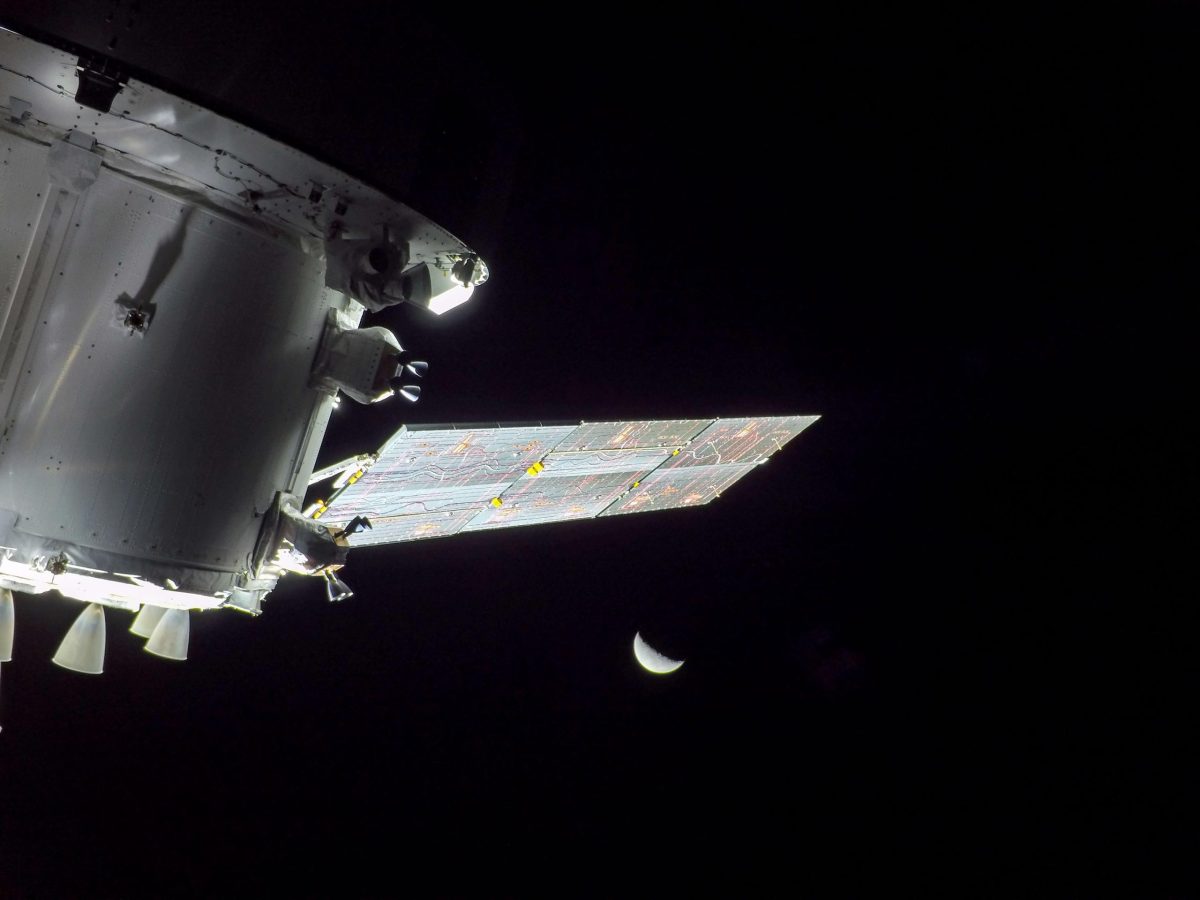View of the Moon seen from ESA’s European Service Module that is powering NASA’s Orion spacecraft to the Moon and back, on flight day nine of the Artemis I mission, on November 24, 2022. At the time the spacecraft was en route to a distant retrograde orbit around the Moon. Credit: NASA
As Orion continued along a distant retrograde orbit of the Moon on the 12th day of the Artemis I mission, team members conducted another planned test of the star trackers aboard the spacecraft. They also began another reaction control thruster flight test.
Engineers hope to characterize the alignment between the star trackers and the Orion inertial measurement units by exposing different areas of the spacecraft to the Sun and activating the star trackers in different thermal states. Both of these are part of the guidance, navigation, and control system. Star trackers are navigation tools that measure the positions of stars to help the spacecraft determine its orientation. The inertial measurement units contain three devices, called gyros, used to measure spacecraft body rotation rates, and three accelerometers used to measure spacecraft accelerations.
Together, the star tracker and inertial measurement unit data are used by Orion’s vehicle management computers to compute spacecraft position, velocity, and attitude. The measurements will help engineers understand how thermal states affect the accuracy of the navigation state, which ultimately affects the amount of propellant needed for spacecraft maneuvers. Read more about Orion’s guidance, navigation, and control system in the Artemis I reference guide.

Artist’s impression of Orion over the Moon. Orion is NASA’s next spacecraft to send humans into space. It is designed to send astronauts further into space than ever before, beyond the Moon to asteroids and even Mars. Credit: NASA/ESA/ATG Medialab
Engineers began a development flight test objective today that changed the minimum jet firing time for the reaction control thrusters over a period of 24 hours. This test objective is designed to exercise the reaction control system jets in a different configuration to model how thruster jets will be used for the crewed Artemis II mission.
Teams also activated and interacted with the Callisto payload, a technology demonstration from Lockheed Martin in collaboration with Amazon and Cisco. Callisto is located in the Orion cabin and will test voice activated and video technology in the deep space environment.
Monday, November 28, Orion will reach its farthest distance from Earth when it is nearly 270,000 miles from our home planet.
As of 4:30 p.m. CST, Orion was over 264,000 miles from Earth and 45,600 miles from the Moon, cruising at 1,750 miles per hour.
To follow the mission real-time, you can track Orion during its mission around the Moon and back, and check the NASA TV schedule for updates on the next televised events.
Share your story or advertise with us: Whatsapp: +2347068606071 Email: info@newspotng.com















